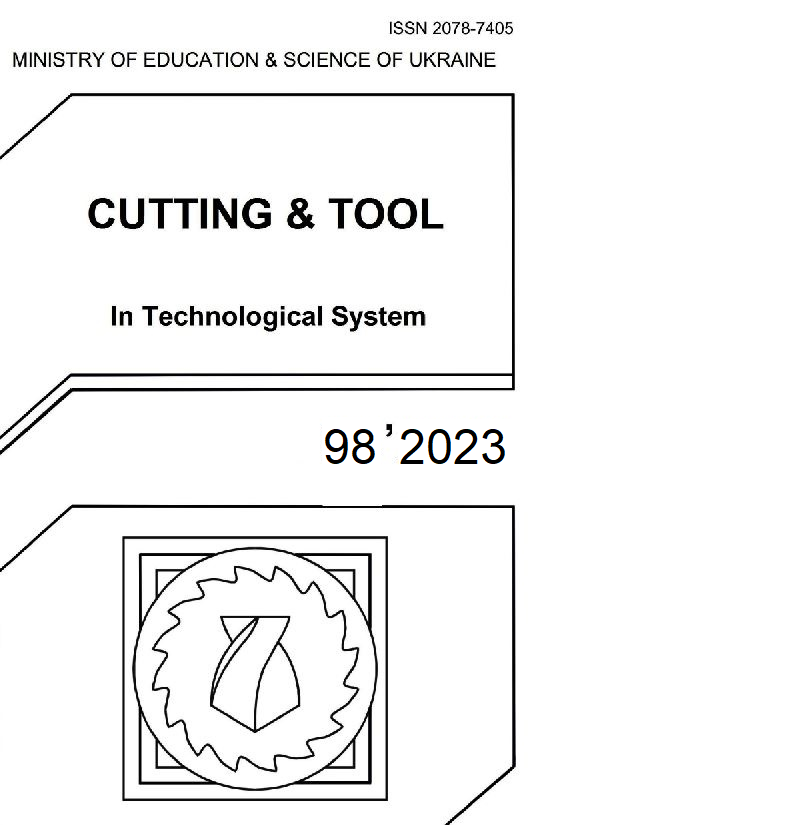ANALYSIS OF SELECTED FUNCTION-DEFINING 2D SURFACE ROUGHNESS PARAMETERS IN TANGENTIAL TURNING
DOI:
https://doi.org/10.20998/2078-7405.2023.98.11Keywords:
functional parameters, kurtosis, skewness, tangential turningAbstract
Among other, more frequently analysed surface topography parameters, the function-defining parameters must be analysed in different machining procedures to outline their application possibilities. These values are the core roughness, the reduced peak height, the reduced valley depth, the skewness, and the kurtosis of the roughness profiles. Tangential turning is a promising machining procedure, which can produce ground-like surfaces with twist-free properties by defined cutting edged tools. The achievable productivity is also very high. Therefore, in this paper, these roughness parameters were analysed from 2D roughness profiles measured on surfaces machined by tangential turning.
References
Schreiber, L., Trott, K.: Verfahren zur drallfreien spanenden Bearbeitung von rotationssymmetrischen Flächen. Patent DE19963897A1, 1999.
Molnar, V.: Tribological properties and 3D topographic parameters of hard turned and ground surfaces, Materials 15(7), art. no. 2505, 2022.
Molnar, V.: Asymmetric height distribution of surfaces machined by hard turning and grinding, Symmetry 14(8), art. no. 1591, 2022.
Kundrák, J., Gyáni, K., Deszpoth, I.: Precision Hard Turning of External Cylindrical Surfaces by Rotation Procedure. Rezanie I Instrumenty V Tekhnologicheskih Sistemah 79 pp. 108–117., 2011.
Kundrák, J.; Fedorovich, V.; Pyzhov, I.; Markopoulos, A. P.: Improving the effectiveness of combined grinding processes for processing superhard materials. Journal of Manufacturing Processes 43 pp. 270–275, 2019.
Schubert, A., Zhang, R., Steinert, P.: Manufacturing of Twist-Free Surfaces by Hard Turning, Procedia CIRP, vol. 7, pp. 294–298, 2013.
Leichner, T., Franke, V., Sauer, B., Aurich, J. C.: Investigation of the tribological behavior of radial shaft rings and soft turned shafts under the influence of abrasive particles. Production Engineering, vol. 5, no. 5, pр. 531–538, 2011.
Kundrak, J., Molnar, V., Markopoulos, A.P.: Joint Machining: Hard turning and Grinding. Rezanie I Instrumenty V Tekhnologicheskih Sistemah 2019 : 90. pp. 36–43. 2019.
Schneider, J., Schreiber, L.: Mit dem Tangentialdrehen zu drallfreien Oberflächen. Werkstatt und Betrieb, vol. 6, pp. 40–45, 2002.
EMAG: “Scroll-Free Turning from EMAG: Fast, Precise, Reliable. EMAG GmbH & Co. KG, [Online]. Available: https://www.emag.com/technologies/scroll-free-turning.html. [Accessed 16. 02. 2021.].
Molnar, V.: Minimization method for 3D surface roughness evaluation area, Machines 9(9), art. no. 192, 2021.
Molnar, V., Szabo, G.: Designation of minimum measurement area for the evaluation of 3D surface texture, Journal of Manufacturing Processes 83, pp. 40–48, 2022.
Downloads
Published
Issue
Section
License
Copyright Notice
Authors who publish with this Collection agree to the following terms:
1. Authors retain copyright and grant the Collection right of first publication with the work simultaneously licensed under a Creative Commons Attribution License that allows others to share the work with an acknowledgement of the work's authorship and initial publication in this Collection.
2. Authors are able to enter into separate, additional contractual arrangements for the non-exclusive distribution of the Collection's published version of the work (e.g., post it to an institutional repository or publish it in a book), with an acknowledgement of its initial publication in this Collection.
3. Authors are permitted and encouraged to post their work online (e.g., in institutional repositories or on their website) prior to and during the submission process, as it can lead to productive exchanges, as well as earlier and greater citation of published work.

